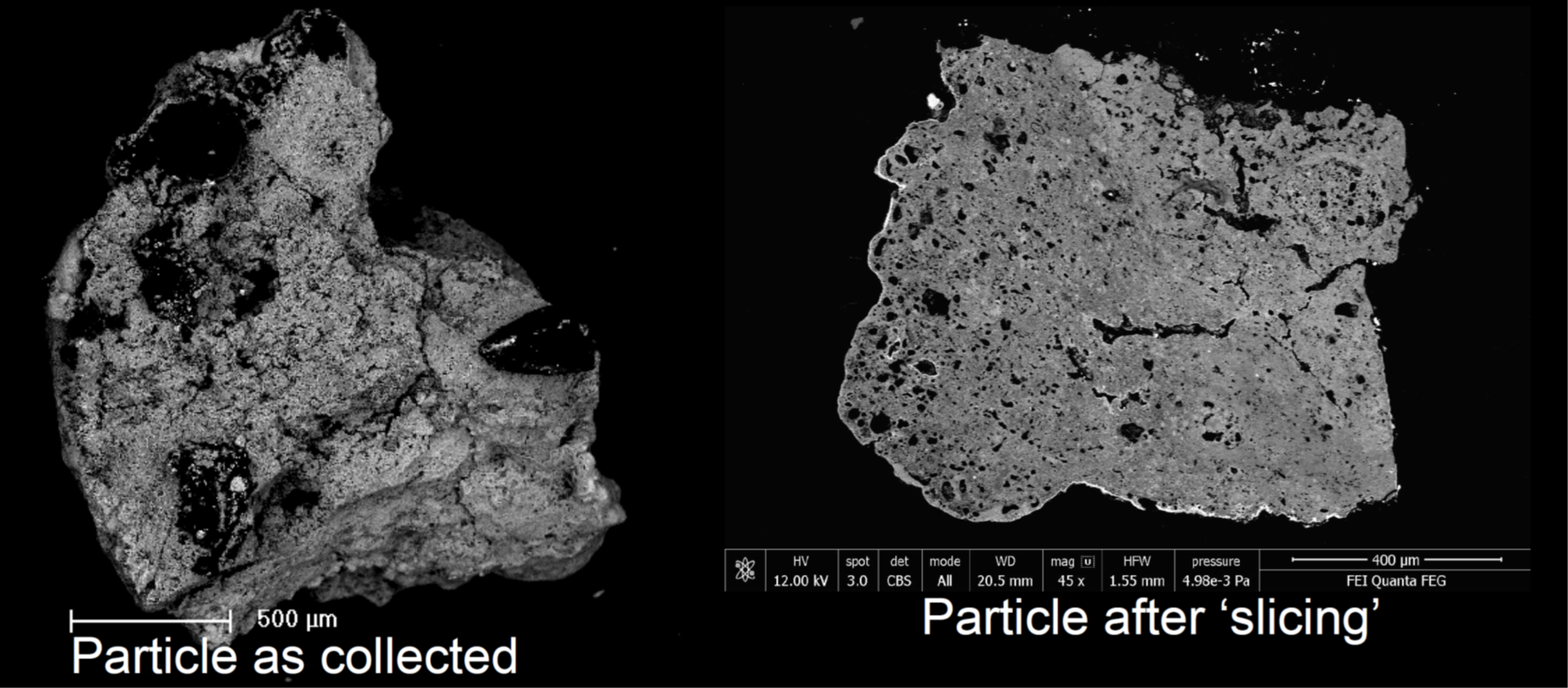Rare micrometeorite may have originated from a Ceres-like asteroid

Curated micrometeorites recovered from Antarctic sediments. Typically there are about 200 micrometeorites per container. These particles originate from a huge diversity of small bodies, both asteroids and comets. Photo by Martin Suttle
A micrometeorite, called TAM19B-7, may have originated from a Ceres-like asteroid, according to a recent study conducted by researchers Maitrayee Bose and Victoria Froh of Arizona State University, Martin Suttle of The Open University, U.K., and Luigi Folco, of the University of Pisa, Italy.
They will be presenting the results of their study at the 53rd annual American Astronomical Society’s Division for Planetary Sciences conference, being held virtually Oct. 3–8.
Micrometeorites are tiny grains of cosmic dust, less than 2 mm (0.08 inch) in size. They can originate from both asteroids and comets. Unlike meteorites, their larger counterparts, micrometeorites typically come from a much larger and more diverse population of solar system small bodies. By studying these samples, scientists can gain new insights into the composition and diversity of small bodies in the asteroid belt.
TAM19B-7 is the largest fine-grained, unmelted micrometeorite found and analyzed to date. It was retrieved from sedimentary traps on the summit of Miller Butte in the Transantarctic Mountains during a 2006 expedition, funded by the Italian Programme for Antarctic Research (PNRA). Based on detailed laboratory analyses, co-authors Suttle and Folco proved that it is an unusual micrometeorite, and it does not appear to belong to any of the known classes of meteorites or micrometeorites.
“The particle is a member of the well-studied carbonaceous chondrite ‘super group’ but appears to be a new, otherwise unsampled population,” said Assistant Professor Maitrayee Bose of ASU’s School of Earth and Space Exploration, who led this study.
Dwarf planet Ceres, which this micrometeorite resembles, is the largest object in the asteroid belt, orbiting between Mars and Jupiter. In recent studies, scientists using data from the NASA Dawn mission found Ceres’ surface to be a mixture of water ice and hydrated materials such as carbonates, chlorides and clays.
In this study, Bose and undergraduate student Froh analyzed TAM19B-7, which they call “a giant among the tiny,” using the ASU-based NanoSIMS (Secondary Ion Mass Spectrometer) instrument to measure carbon isotopes in the micrometeorite.
Specifically, they found the micrometeorite’s isotopic composition to be enriched in heavy carbon 13. These heavy carbon 13 enrichments are characteristic of meteorites that have been affected by interaction with water and led to the production of carbon 13 enriched carbonates. These reactions occurred on the asteroid parent body approximately 4.5 billion years ago, which is soon after they were formed. This may help scientists understand the conditions on asteroids during the age of planet formation.

Images of micrometeorite TAM19B-7 before and after "slicing." Image by Martin Suttle
“Despite the remarkable chemical similarities between TAM19B-7 and salt deposits on the surface of Ceres, we are not proposing that TAM19B-7 originated from Ceres. Rather it provides a window into the solar system materials that are missing from our collections of known meteorites,” Bose said. “Micrometeorites like TAM19B-7 provide crucial missing links in our understanding of the diversity of ultra-hydrated asteroids like Ceres.”
Suttle said, “The properties of this micrometeorite are consistent with our expectations of a Ceres-like body. Analysis of this micrometeorite therefore helps us to understand the geological processes that operated on large water-rich asteroids in the early solar system."
For next steps, Bose and her team plan to continue studying the micrometeorites in their collection to learn more about the potential role micrometeorites played in the delivery of volatiles to the early Earth.
“The contribution of micrometeorites to Earth’s geochemical budget is often overlooked because they are small and difficult to study,” Bose said. “However, their cumulative effect, over the eons, amounts to a huge mass input.”
A press briefing on these findings was held at the American Astronomical Society's Division of Planetary Sciences conference at 8 a.m. Pacific time (11 a.m. Eastern time) Oct. 5. The Bose et al. session at the conference (“Possible connections between the unusual micrometeorite TAM19B-7 and dwarf planet Ceres”) is scheduled for 11 a.m. Pacific time (2 p.m. Eastern time) Oct. 5.
More Science and technology

ASU and Deca Technologies selected to lead $100M SHIELD USA project to strengthen U.S. semiconductor packaging capabilities
The National Institute of Standards and Technology — part of the U.S. Department of Commerce — announced today that it plans to…

From food crops to cancer clinics: Lessons in extermination resistance
Just as crop-devouring insects evolve to resist pesticides, cancer cells can increase their lethality by developing resistance to…

ASU professor wins NIH Director’s New Innovator Award for research linking gene function to brain structure
Life experiences alter us in many ways, including how we act and our mental and physical health. What we go through can even…